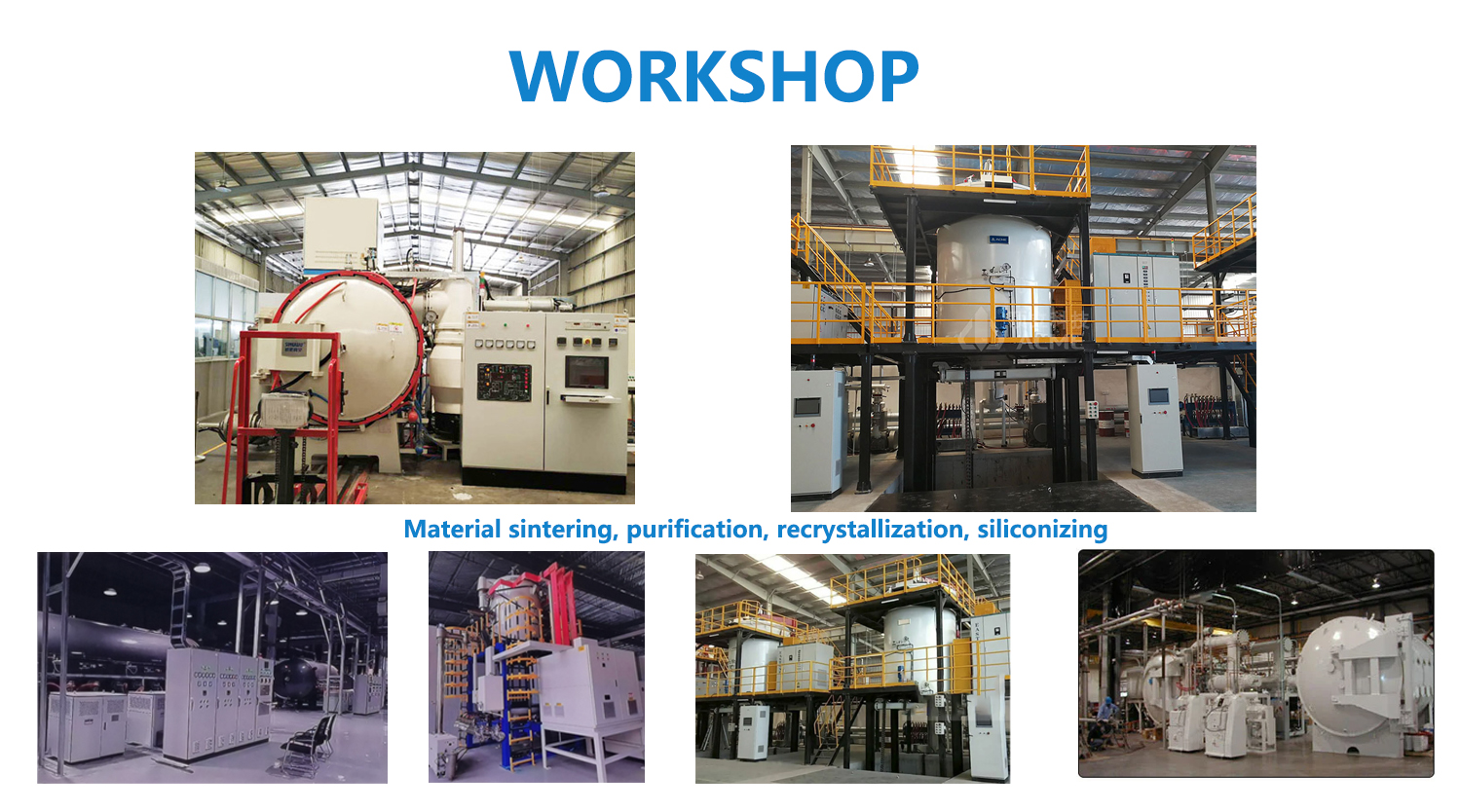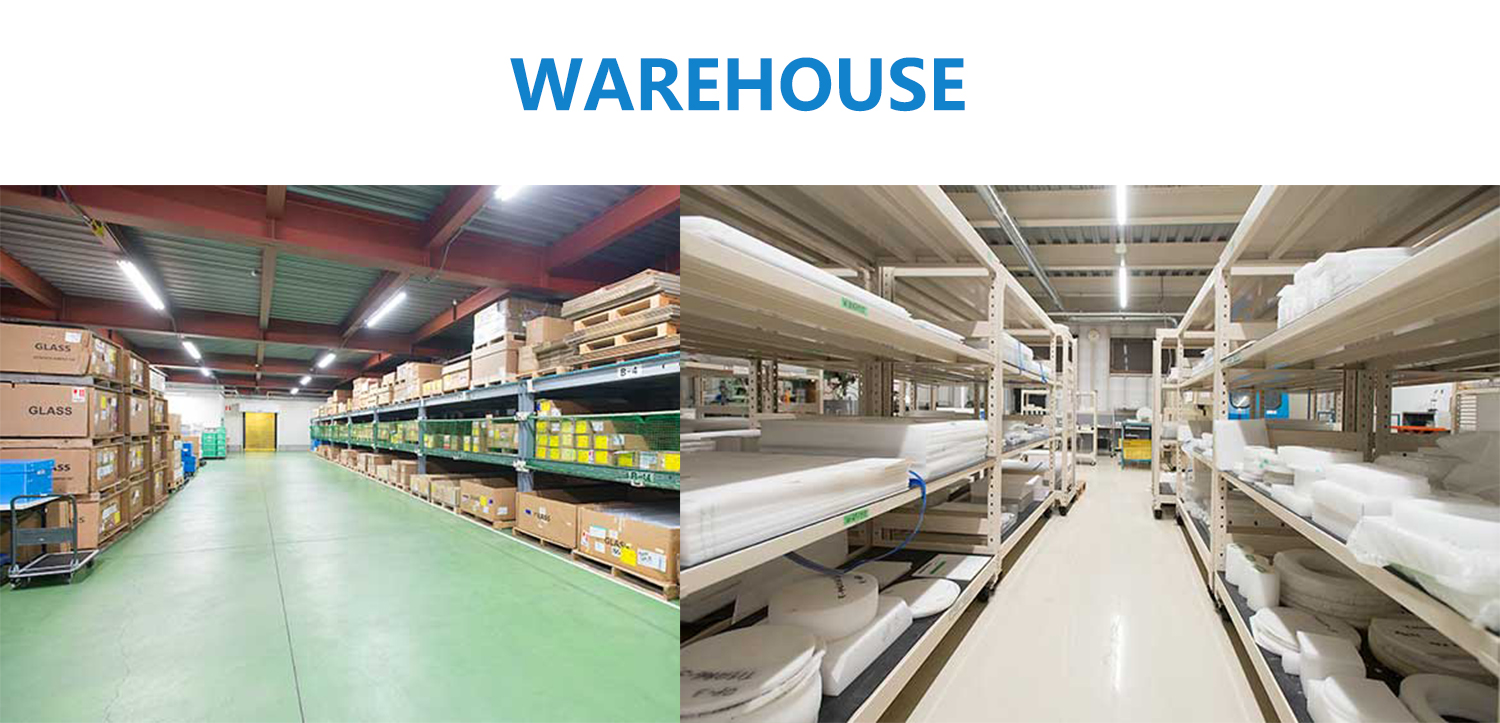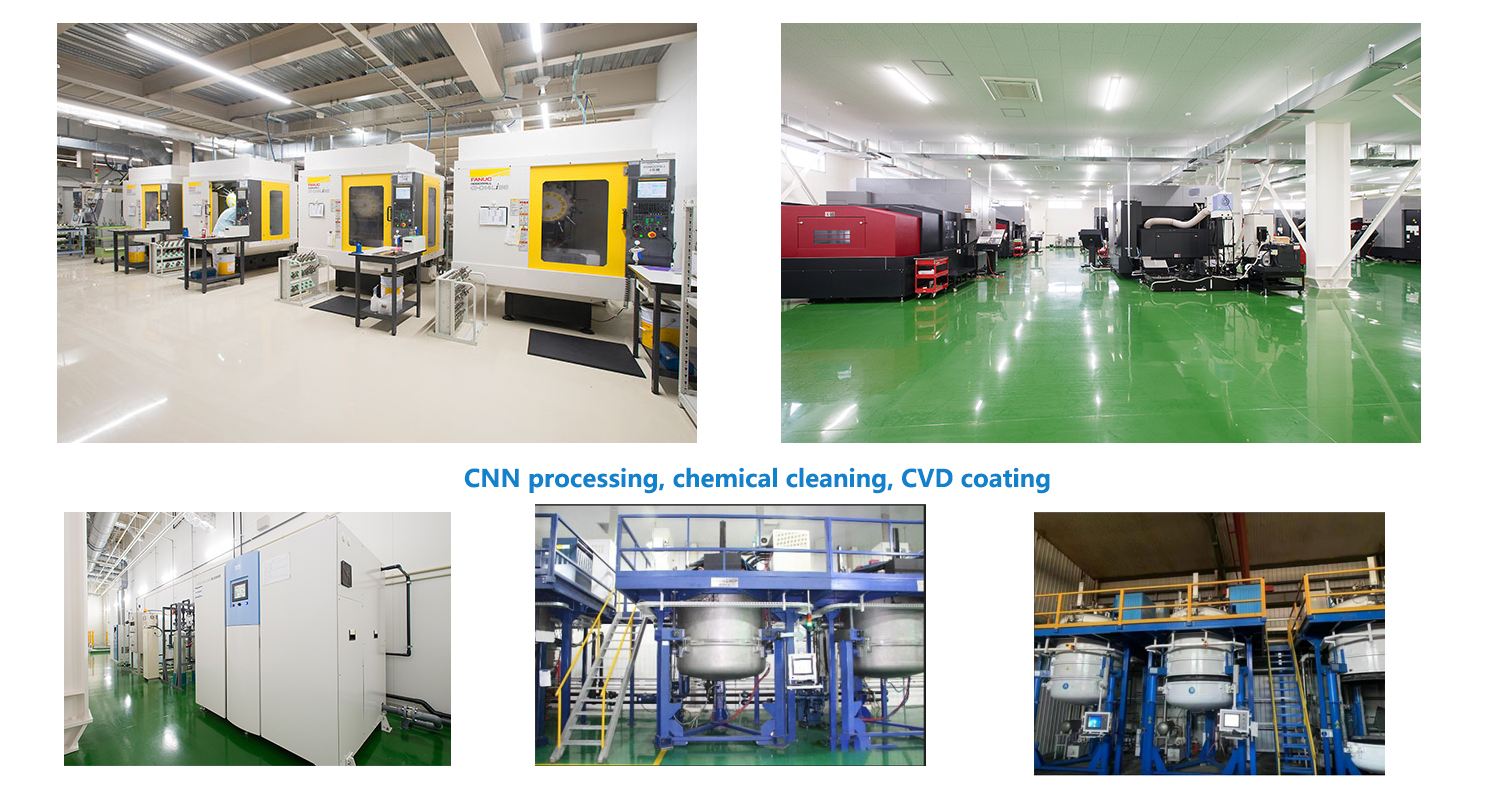
Bei der Isolierung liefern nicht alle Materialien dieselben Ergebnisse. Weiches Graphitfilz, wie das weiche Graphitfilz von Semicera für die Isolierung, bietet unübertroffene Leistung. Seine thermische Effizienz, Flexibilität und Haltbarkeit machen es zu einer überlegenen Wahl. Im Gegensatz dazu fällt der starre Filz bei anspruchsvollen Anwendungen oft unter. Es fehlt an der Anpassungsfähigkeit, die erforderlich ist, um komplexe Umgebungen oder langfristige Nutzung zu bewältigen. Die Wahl des richtigen Materials sorgt für eine bessere Energieeffizienz und Zuverlässigkeit in Ihren Projekten.
Wichtigste Erkenntnisse
- Weiche Graphitfilz-Ausformungen rigid felt in der thermischen effizienz, so dass es die ideale wahl für hochtemperaturanwendungen.
- Seine Flexibilität ermöglicht eine einfache Installation in komplexen Formen, sorgt für eine nahtlose Passform und reduziert die Installationszeit.
- Weiches Graphitfilz hält gleichbleibende Isolationsleistung über unterschiedliche Bedingungen und verbessert die Energieeffizienz in Systemen wie HVAC.
- Die Haltbarkeit ist ein wesentlicher Vorteil; weicher Graphitfilz widersteht Verschleiß und führt zu geringeren langfristigen Wartungskosten.
- Die Investition in weiches Graphitfilz bietet aufgrund seiner Langlebigkeit einen besseren ROI und reduzierten Bedarf an häufigen Austauschen.
- Dieses vielseitige Material ist geeignet für vielfältige branchen, einschließlich luft- und raumfahrt und erneuerbare energie, die einzigartige isolationsanforderungen erfüllen.
- Die Wahl von weichem Graphitfilz verbessert nicht nur die Leistung, sondern unterstützt auch die Nachhaltigkeit durch die Minimierung von Energieverlust.
Ausgezeichnete Thermische Leistung
Verbesserte Wärmebeständigkeit
Weiches Graphitfilz ist die Fähigkeit, extremen Temperaturen standzuhalten, ohne abbauen.
Weiches Graphitfilz zeichnet sich durch Hochtemperatur-Umgebungen aus. Es widersteht der Degradation auch bei extremer Hitze. Dies macht es zu einer zuverlässigen Wahl für Anwendungen, die eine gleichbleibende Wärmeleistung erfordern. Seine Struktur bleibt stabil und gewährleistet eine langfristige Effizienz. Sie können es vertrauen, um seine Integrität unter anspruchsvollen Bedingungen zu erhalten.
Vergleich der Wärmeleitfähigkeit zwischen weichem Graphitfilz und festem Filz.
Rigid fühlte sich dagegen bemüht, diese Leistungsstufe zu erreichen. Wenn Sie brauchen hohe isolationweicher graphitfilz liefert bessere ergebnisse.
Konsistente Isolierung über Anwendungen
Wie weicher Graphitfilz die thermische Effizienz bei unterschiedlichen Bedingungen beibehält.
Ob die Temperaturen schwanken oder konstant hoch bleiben, sie erfüllt zuverlässig. Diese Anpassungsfähigkeit sorgt dafür, dass Ihre Systeme bleiben thermische effizienz und geschützt.
Begrenzungen von starrem Filz in Hochtemperatur- oder schwankenden Umgebungen.
Rigid fühlt fällt oft in anspruchsvollen Umgebungen kurz. Es fehlt an der Flexibilität, Temperaturschwankungen effektiv zu handhaben. Im Laufe der Zeit kann seine Leistung abbauen, was zu Ineffizienzen führt. Für Anwendungen, die eine konsistente Isolation erfordern, erweist sich der starre Filz weniger zuverlässig.
Flexibilität und Anpassungsfähigkeit
Ease der Installation
Die Zähigkeit des weichen Graphitfilzes erlaubt es, unregelmäßigen Formen zu entsprechen.
Weiches Graphitfilz bietet unübertroffene Zähigkeit, so dass es während der Installation einfach zu arbeiten. Sie können es formen, um unregelmäßige Oberflächen oder enge Ecken zu passen, ohne seine Struktur zu beeinträchtigen. Diese Flexibilität sorgt für eine nahtlose Passform auch in komplexen Setups. Egal, ob Sie gekrümmte Oberflächen isolieren oder komplizierte Designs, weicher Graphitfilz passt sich mühelos an Ihre Bedürfnisse an.
Herausforderungen der Installation von starrem Filz in komplexen oder engen Räumen.
Rigid Filz hingegen stellt bei der Installation erhebliche Herausforderungen. Seine steife Struktur macht es schwierig, für nicht standardmäßige Räume einzustellen oder zu formen. Sie können Lücken oder Fehlausrichtungen bei der Verwendung von starrem Filz in engen oder komplexen Bereichen auftreten. Diese Probleme können die Isolationseffizienz verringern und die Zeit und den Aufwand für die Installation erhöhen.
Versatility in Applications
Weiches Graphitfilz ist die Eignung für verschiedene Branchen und individuelle Designs.
Weiches Graphitfilz zeichnet sich durch seine Vielseitigkeit aus. Sie können es in verschiedenen Branchen verwenden, einschließlich Luft- und Raumfahrt, Elektronik und Metallurgie. Seine Anpassungsfähigkeit ermöglicht es, die einzigartigen Anforderungen an benutzerdefinierte Designs und spezialisierte Anwendungen zu erfüllen. Ob Sie Dämmung für Hochtemperaturöfen oder fortschrittliche Energiesysteme benötigen, Soft Graphitfilz liefert zuverlässige Leistung.
Die Einschränkungen von Rigid Filz bei der Anpassung an nicht standardisierte Anforderungen.
Rigid fühlte sich bemüht, den Anforderungen von nicht-Standard-Anwendungen gerecht zu werden. Sein Mangel an Flexibilität begrenzt seinen Einsatz in Industrien, die maßgeschneiderte Lösungen benötigen. Sie können es für Projekte mit unregelmäßigen Formen oder dynamischen Umgebungen ungeeignet finden. Diese Einschränkung macht starren Filz weniger effektiv für Anwendungen, die Präzision und Anpassungsfähigkeit erfordern.
Durability and Longevity

Widerstand gegen Wear und Tear
Weiches Graphitfilz ist die Fähigkeit, mechanische Beanspruchung und wiederholte Verwendung zu ertragen.
Weiches Graphitfilz bietet außergewöhnliche Haltbarkeit und macht es zu einer zuverlässigen Wahl für anspruchsvolle Anwendungen. Seine Struktur widersteht mechanischen Belastungen, so dass sie auch bei wiederholtem Gebrauch konsequent durchführen kann. Sie können sich darauf verlassen, seine Integrität bei harten Bedingungen oder häufiger Handhabung zu erhalten. Diese Widerstandsfähigkeit sorgt dafür, dass Ihre Isolation im Laufe der Zeit wirksam bleibt und die Notwendigkeit für häufige Ersetzungen reduziert.
Wie starrer Filz ist anfällig für Risse oder Brechen unter Druck.
Rigid fühlte sich dagegen an, mechanischer Beanspruchung standzuhalten. Seine steife Zusammensetzung macht es anfällig zu knacken oder zu brechen, wenn es mit Druck beaufschlagt wird. Im Laufe der Zeit kann diese Fragilität ihre Leistung kompromittieren, was zu Ineffizienzen in der Isolation führt. Wenn Ihre Anwendung dynamische Umgebungen oder wiederholte Verwendung beinhaltet, kann starres Filz nicht die erforderliche Zuverlässigkeit bieten.
Performance über die Zeit
Langlebigkeit von weichem Graphitfilz in rauen Umgebungen.
Weiches Graphitfilz zeichnet sich durch die Aufrechterhaltung seiner Leistung über längere Zeiträume aus. Seine Fähigkeit, Verschleiß zu widerstehen, sorgt dafür, dass es auch in rauen Umgebungen wirksam bleibt. Ob extremen Temperaturen oder korrosiven Bedingungen ausgesetzt, es liefert weiterhin konsistente Isolation. Diese Langlebigkeit macht es zu einer kostengünstigen Lösung für Industrien, die haltbarkeit materialien.
Rigid fühlt die Tendenz, schneller unter anspruchsvollen Bedingungen zu degradieren.
Rigid fühlt fällt oft kurz, wenn in anspruchsvollen Umgebungen verwendet. Seine Struktur neigt dazu, schneller abzubauen, vor allem unter extremer Hitze oder schwankenden Bedingungen. Dieser Abbau kann zu einer geringeren Isolationseffizienz und zu erhöhten Wartungskosten führen. Für langfristige Zuverlässigkeit kann starrer Filz nicht den Anforderungen von Hochleistungsanwendungen entsprechen.
Cost-Effectiveness
Niedrigere Langzeitkosten
Wie weicher Graphitfilz die Wartungs- und Ersatzkosten reduziert.
Weiches Graphitfilz bietet eine dauerhafte Lösung, die den Wartungsbedarf minimiert. Seine Widerstandsfähigkeit gegen Verschleiß sorgt für gleichbleibende Leistung im Laufe der Zeit. Sie werden es nicht häufig ersetzen müssen, was Betriebsunterbrechungen reduziert. Diese Haltbarkeit übersetzt geringere kosten für reparaturen und Ersatz. Durch die Wahl von weichem Graphitfilz investieren Sie in ein Material, das Sie Geld auf lange Sicht spart.
Die versteckten Kosten des starren Filzes aufgrund seiner kürzeren Lebensdauer.
Rigid Filz erfordert häufige Ersetzungen aufgrund seiner begrenzten Haltbarkeit. Kranke oder Abbau unter Stress kann zu Ineffizienzen führen, die Sie zwingen, mehr auf Reparaturen zu verbringen. Diese versteckte kosten für starres filz fügen sich im Laufe der Zeit, so dass starre Filz eine weniger wirtschaftliche Wahl. Während es zunächst erschwinglich erscheinen mag, erhöht seine kürzere Lebensdauer Ihre Gesamtkosten.
Value for Money
Kostenvorteile mit langfristigen Leistungsvorteilen ausgleichen.
Weiches Graphitfilz bietet einen ausgezeichneten Wert durch den Ausgleich von Anfangsinvestitionen mit langfristigen Vorteilen. Seine überlegene thermische Effizienz und Haltbarkeit reduzieren Energieverlust und Wartungskosten. Sie erhalten eine zuverlässige Isolierung, die auch bei anspruchsvollen Bedingungen konsequent funktioniert. Dieses Gleichgewicht sorgt dafür, dass Ihre Ausgaben im Voraus im Laufe der Zeit erhebliche Renditen liefern.
Warum weicher Graphitfilz bessere ROI für Isolationsprojekte bietet.
Weiches Graphitfilz liefert eine höhere Investitionsrendite (ROI) für Isolationsprojekte. Seine Anpassungsfähigkeit und Langlebigkeit machen es für vielfältige Anwendungen geeignet, wodurch der Bedarf an häufigen Austauschen reduziert wird. Sie profitieren von geringeren Betriebskosten und einer verbesserten Systemeffizienz. Im Vergleich zu starrem Filz erweist sich weiches Graphitfilz als intelligentere finanzielle Entscheidung zur Erzielung langfristiger Isolationserfolge.
Anwendungen, wo weiche Graphitfilz Excels

Industrial Applications
Einsatz in Hochtemperaturöfen und Ofenn.
Weiches Graphitfilz führt in Hochtemperaturöfen und Ofenn hervorragend durch. Seine Fähigkeit, extreme Hitze ohne Abbau zu widerstehen, sorgt für konsequente Isolation. Sie können sich darauf verlassen, um Wärmeverlust zu minimieren, was die Energieeffizienz verbessert und die Betriebskosten reduziert. Das leichte Design erleichtert auch die Handhabung während der Installation und spart Ihnen Zeit und Mühe. Ob Sie in der Metallurgie, Keramik oder Glasproduktion arbeiten, dieses Material verbessert die Leistung Ihrer thermischen Systeme.
Vorteile in der Luft- und Automobilindustrie.
In der Luft- und Automobilindustrie erweist sich weicher Graphitfilz als unschätzbar. Seine überlegene thermische Beständigkeit und leichte Eigenschaften machen es ideal für fortgeschrittene Anwendungen. Sie können es in Komponenten verwenden, die ein präzises Wärmemanagement erfordern, wie Hitzeschilde oder Batterieisolierung. Seine Anpassungsfähigkeit ermöglicht es, die einzigartigen Anforderungen dieser Branchen zu erfüllen und eine zuverlässige Leistung unter anspruchsvollen Bedingungen zu gewährleisten. Durch die Wahl von weichem Graphitfilz erhalten Sie ein Material, das Innovation und Effizienz in modernsten Technologien unterstützt.
Energie- und Umweltanwendungen
Rolle in erneuerbaren Energiesystemen wie Solarzellen.
Weiches Graphitfilz spielt bei erneuerbaren Energiesystemen eine entscheidende Rolle. Bei der Herstellung von Solarpaneelen bietet es eine effektive Isolation bei Hochtemperaturprozessen. Seine thermische Stabilität gewährleistet gleichbleibende Ergebnisse, was die Qualität des Endproduktes verbessert. Sie können es auch in Energiespeichersystemen verwenden, wo seine Haltbarkeit und Effizienz die Gesamtleistung steigern. Dieses Material unterstützt den Übergang zu saubereren Energielösungen durch eine Optimierung des Wärmemanagements in erneuerbaren Technologien.
Vorteile bei der Reduzierung von Energieverlust in HVAC-Systemen.
In HVAC-Systemen hilft weiches Graphitfilz Energieverlust zu reduzieren. Seine geringe Wärmeleitfähigkeit minimiert den Wärmeübergang, wodurch Ihre Systeme effizient laufen. Sie können es verwenden, um Kanäle, Rohre oder andere Komponenten zu isolieren, um eine einheitliche Temperaturkontrolle zu gewährleisten. Dies senkt nicht nur den Energieverbrauch, sondern reduziert auch die Betriebskosten. Durch die Einbindung von weichem Graphitfilz in Ihre HVAC-Systeme schaffen Sie eine nachhaltigere und kostengünstigere Lösung für die Temperaturregulierung.
Semiceras weiches Graphit Filz für Isolieren zeichnet sich durch die ultimative Lösung für Isolationsanforderungen aus. Seine überlegene thermische Leistung, unübertroffene Flexibilität und außergewöhnliche Haltbarkeit sorgen für zuverlässige Ergebnisse in anspruchsvollen Anwendungen. Sie gewinnen langfristige Wert- und Kostenersparnis durch die Wahl dieses fortschrittlichen Materials. Während starres Filz bestimmten Zwecken dienen kann, kann es nicht der Anpassungsfähigkeit oder Effizienz von weichem Graphitfilz entsprechen. Für Industrien, die eine gleichbleibende Isolation und Energieeffizienz erfordern, erweist sich weiches Graphitfilz als die klare und zuverlässige Wahl.
FAQ
Was ist weicher Graphitfilz und wie unterscheidet er sich von starrem Filz?
Im Gegensatz zu rigid felt, die eine steife struktur hat, weicher graphitfilz entspricht unregelmäßigen formen und führt gut in dynamischen umgebungen.
Warum ist weicher Graphitfilz besser für Hochtemperaturanwendungen?
Weiches Graphitfilz hält extremen Temperaturen stand ohne Abbau. Seine thermische Stabilität gewährleistet eine gleichmäßige Isolation, auch in rauen Umgebungen. Rigid fühlte sich im Vergleich oft bemüht, seine Leistung unter ähnlichen Bedingungen zu erhalten.
Kann weiches Graphitfilz in kundenspezifischen oder nicht standardmäßigen Ausführungen verwendet werden?
Ja, weicher Graphitfilz passt sich leicht an individuelle Designs an. Seine Zähigkeit ermöglicht es, unregelmäßige Formen und komplexe Setups zu passen. Dies macht es ideal für Industrien, die maßgeschneiderte Isolationslösungen wie Luft- und Elektronik benötigen.
How does soft graphite felt improve energy efficiency?
Weiches Graphitfilz minimiert Wärmeübertragung aufgrund seiner geringen Wärmeleitfähigkeit. Dies reduziert den Energieverlust in Systemen wie HVAC, Öfen und Erneuerbare Energien. Durch die Nutzung können Sie den Energieverbrauch und die Betriebskosten senken.
Ist weicher Graphitfilz langlebig genug für den langfristigen Gebrauch?
Weiches Graphitfilz widerstandsfähig gegen Verschleiß, auch unter mechanischer Beanspruchung oder wiederholtem Gebrauch. Seine Struktur bleibt in anspruchsvollen Umgebungen intakt und gewährleistet eine langfristige Zuverlässigkeit. Diese Haltbarkeit reduziert den Bedarf an häufigen Austauschen.
Welche Branchen profitieren am meisten von weichem Graphitfilz?
Branchen wie Luft- und Raumfahrt, Automotive, Metallurgie und erneuerbare Energien profitieren deutlich. Weiches Graphitfilz zeichnet sich durch Hochtemperaturöfen, Ofen und Energiesysteme aus. Seine Vielseitigkeit macht es für eine breite Palette von Anwendungen geeignet.
Wie vergleicht weicher Graphitfilz mit festem Filz in Bezug auf Kosten?
Weiches Graphitfilz bietet einen besseren langfristigen Wert. Während die Vorkosten höher sein können, reduzieren die Haltbarkeit und die Effizienz die Wartungs- und Ersatzkosten. Rigid fühlt verursacht oft versteckte Kosten aufgrund seiner kürzeren Lebensdauer.
Is soft graphite felt easy to install?
Ja, weiches Graphitfilz ist einfach zu handhaben und zu installieren. Seine Flexibilität ermöglicht es, enge Räume und unregelmäßige Oberflächen nahtlos zu passen. Dies reduziert die Montagezeit und den Aufwand im Vergleich zu starrem Filz.
Kann weicher Graphit in erneuerbaren Energiesystemen eingesetzt werden?
Absolut. Weiches Graphitfilz spielt bei erneuerbaren Energieanwendungen eine entscheidende Rolle. Es bietet eine effektive Isolierung in Solarpaneel-Produktions- und Energiespeichersystemen, die Leistungsfähigkeit und die Nachhaltigkeit zu verbessern.
Was macht Semiceras weiches Graphit Einzigartig?
Der weiche Graphitfilz von Semicera kombiniert überlegene thermische leistung, flexibilität und haltbarkeit.